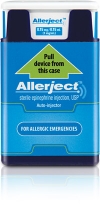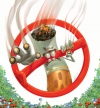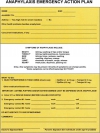
Intent
One of the most important steps in reducing the spread of common infectious diseases or conditions among children and child care is cleaning and sanitizing or disinfecting objects and any surfaces a child comes in contact with, including floors, that could be contaminated and spread diseases to other children and staff.
Routine cleaning and sanitization of the child care setting will be done on a daily basis and recorded by staff members. Staff are responsible to keep records of all cleaning and sanitization that has been done within the classrooms. Policies and procedures outlined in this document reflect those outlined by York Region Public Health.
This policy includes procedures related to all of the following topics:
- Signs and symptoms of communicable disease*
- Cleaning and disinfection
- Hand hygiene practices
- Cleaning and diapering
- Prevention of occupationally acquired infections
- Communication with parents and staff with respect to infection, prevention and control
- Immunization records*
- Reporting to the medical officer*
- Management of infectious disease*
- Exclusion of sick children, staff, students or volunteers*
- Required communication with parents
- Management of Animals
*These topics are covered in the Illness Policy & Procedure
Steps and procedures discussed in the policy reflect those in the York Region Public Health Manual: A Public Health Guide for Child Care Providers.
Communication with Parents and Staff
Parents and staff are required to read both this policy and the Illness Policy and Procedures as they are the primary forms of communication. Both will cover the following topics: how parents and staff made aware of illness in the center, why prevention is important, how items will be cleaned and disinfected, if/when an outbreak occurs and timeline for cleaning and disinfecting.
Cleaning and disinfection practices
Routine Cleaning:
Using soap and water to remove visible dirt and rinse with clean water. Cleaning must be done prior to disinfecting. There are three steps to the cleaning process: wash, rinse and dry. Cleaning tools include: multi-use gloves, laundered cloths, mops and brooms.
Cleaning should take place when children are not present in the area. Cleaning should be carried out starting from the least to heaviest soiled areas and from low touch to high touch areas. High touch surfaces are those that are in frequent contact with hands (e.g. door knobs, faucets, light switches, computer keyboards and toys).
Sanitizing/Disinfecting:
Removing visible dirt and applying an additional sanitizer solution to reduce the number of germs likely to cause disease. The following procedures must be performed by staff:
- Table used for eating and preparation will be cleaned with soap and water, rinsed, and then sanitized with bleach solution before and after each meal or snack.
- Kitchen will be cleaned daily and more often if necessary. All sinks, countertops, and floors will be cleaned and sanitized each day. The refrigerator will be cleaned and sanitized monthly or more often as needed.
- Children and teacher chairs will be sanitized and wiped down at the end of each day.
- All mouthed toys will be washed, rinsed, and sanitized in between the use by different children.
- All used toys (not mouthed) will be washed, rinsed, sanitized, and air dried at least once a week.
- Cloth toys and dress up toys will be run through a full wash and dry cycle weekly or more often as needed.
- All child care laundry will be washed on a warm to hot cycle with detergent and/or bleach.
- All hard floors will be swept and mopped with a sanitizing detergent each day.
- All bathrooms will be cleaned and sanitized each day or as often as needed. This includes all sinks, countertops, toilets, and floors.
- All cubbies will be cleaned out and sanitized at the end of each week.
- All cribs/cots will be cleaned and sanitized at the end of each week, before the use of a different child, after a child has been ill, or as often as needed.
- All bedding/bed sheets will be washed with detergent or bleach weekly or more frequently as needed.
- Water tables will be cleaned out and sanitized after each use or more often as needed. All children are to wash their hands before and after they have played at the water table. Children with cuts, sores, etc. on their hands should not be permitted to use the communal sensory table. Cups or open vessels should not be used so that children are discouraged from drinking water in the sensory table.
- Regular cleaning and sanitization will increase if there is an outbreak of a contagious infection or disease in the childcare setting.
*Disposable gloves are to be worn when staff member’s hands are to come in direct contact with any blood or bodily fluid. Hands are to be washed immediately after gloves are removed.
Food Handing & Sanitation
All staff, cook and children are to wash their hands upon entering the kitchen. Tongs and utensils must be used to handle food. Separate tongs and utensils are to be used for each type of plate or food. Food must be plated separately ie.2 types of sandwiches must be plated in 2 separate plates. Keep cold foods cold and hot foods hot at the proper temperatures; please refer to the health and safety binder for proper temperatures.
Kitchen Sanitization
The cook will use the following procedures:
- All equipment, work surface, floors and eating utensils must be cleaned and disinfected to prevent illness from food (see safe food handling resource).
- All dishes must be washed , rinsed and disinfected using one of the following methods:
- Commercial dishwasher
- Two or three compartment sink.
Dishwashing Procedure
- Wash dishes in hot soapy water.
- Rinse in warm clear water.
- Sanitize with 1 part bleach and 500parts water.(mix 1 tsp bleach to 2.5 liters of water), soak for 1 minute and let air dry.
Outbreak (Enteric) Routine
An enteric outbreak may be in effect when there are three or more related (e.g. same room, same age group,) children or staff with similar signs and symptoms of enteric infection:
- Occurring within 48 hours in the centre, or
- When there are two or more laboratory-confirmed cases, or
- When the number of staff/children exceeds what is normal in the child care centre or school within a short period of time.
Early detection of signs and symptoms through observation of children’s health, as well as good record keeping are crucial to the recognition and control of an outbreak. Typical symptoms of enteric illness are:
- Diarrhea
- Bloody diarrhea
- Vomiting
- Nausea
- Stomach cramps
- Fever
- General irritability
- Malaise
- Headache
NOTE: symptoms such as a cough, runny nose, sneezing, nasal congestion, sore throat, and hoarseness are not usually associated with enteric illness and may be due to respiratory illness.
York Region Public Health provides information on respiratory illnesses and makes recommendations on appropriate control measures to prevent spread of illness to others.
Hand hygiene practices
Hand washing with soap and water is the preferred method for hand hygiene. If soap and water are unavailable, Alcohol-based hand rub (ABHR) (aka. Hand Sanitizer) containing 60-90% alcohol can be used, only if hands are not visibly soiled. All ABHR’s must be routinely checked to ensure the product is not expired.
When to wash your hands:
- When you arrive to work
- Before and after handling food
- Before and after eating
- After using the washroom
- After you cough or sneeze into your hands
- After changing/checking diapers
- Before and after wearing gloves
- Before giving any medications
- Anytime your hands feel dirty
- Anytime your hands are visibly soiled
Proper hand washing procedure diagrams are located at each sink station throughout the center as well as on page 10 of A Public Health Guide for Child Care Providers. Staff and students are encouraged to follow the proper steps as outlined on the form.
Nine-Step Diapering procedure
- Gather needed supplies.
- Wash your hands.
- Put on disposable gloves
- Remove and discard soiled diaper (in a garbage container that has tight fitting lid and disposable liner)
- Clean child’s bottom. Diaper and dress the child
- Discard the soiled gloves in the garbage container
- Wash your hands and then child’s hands. Return the child to a supervised area
- Clean and disinfect the change pad ensuring proper contact time is followed. If using a disposable paper liner, ensure the liner is discarded after each diaper change and replaced with a new one
- Wash your hands
Nine-Step Toileting Procedure
- Gather needed supplies
- Wash your hands. Put on disposable gloves
- Remove and discard soiled disposable training pant (in a garbage container that has a tight fitting lid and disposable liner)
- Place the child on the toilet/potty chair
- Clean child’s bottom. Put on a new disposable training pant and dress the child
- Discard soiled gloves. Wash your hands and then the child’s hands. Return the child to a supervised area
- Put on gloves. Empty contents from potty chair into the toilet and flush. Clean and disinfect toilet seat insert/potty chair
- Discard gloves and wash hands
- Store toilet seat insert/potty chair in a sanitary manner
Report any abnormal skin or stool conditions (rash, unusual fecal consistency, colour, odour or frequency) to parent and record on child’s chart in file.
Prevention of Occupationally acquired infections
- Frequent and proper hand washing
- Exclusion of ill children and staff
- Effective environmental cleaning and disinfection
- Following proper cough and sneeze etiquette
- Appropriate use of personal protective equipment (i.e gloves)
- Ensuring immunizations are up-to-date
Required reporting of cases
Staff will report any suspected outbreak to York Region Public Health.
Policies and procedures for responding to infectious disease outbreak are outlined in the Illness Policy and Procedures.
Management of animals
Animals are not a regular part of the child care centre’s activities as they are prohibited.
*For how to control the outbreak refer to health and safety binder.



